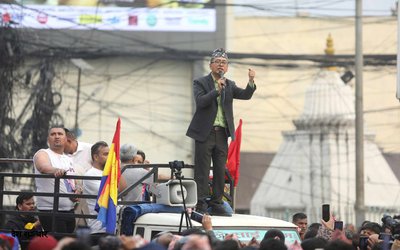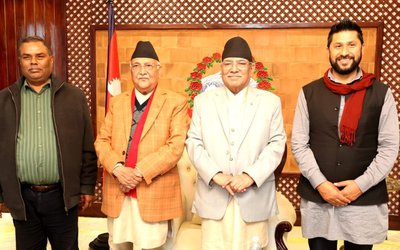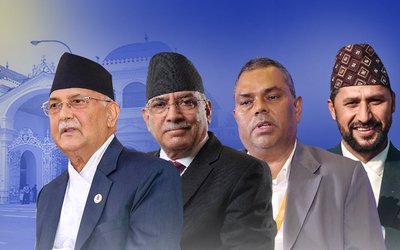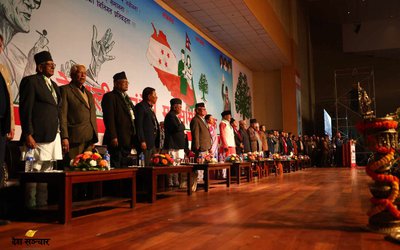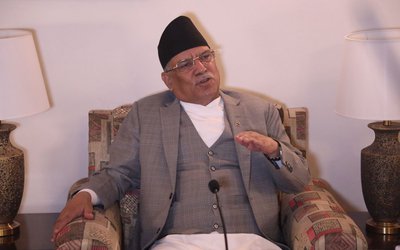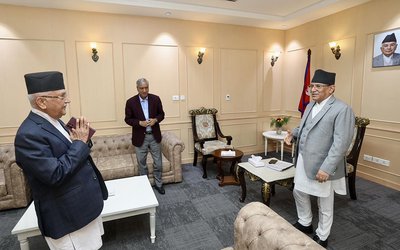The history of organized armed conflict has been reluctantly written in Nepal where peace messengers like Buddhha and Bhrikuti were born. This situation occurred because of incoherent sentiments of the people based on different class, cast, language, religion and sex under the fake umbrella of national unity. Resulting from this, the armed struggle, running since 2052, formally ceased after the comprehensive peace accord between the Interim Nepal Government and the Nepal Communist Party Maoist on 05 Mangsir, 2063. This peace accord is also a part of the Interim Constitution. As mentioned under the peace accord, supervision, integration and rehabilitation are to be done by the special committee formed by Government. The same committee has now completed the re-verification of the Maoist combatants at the 7 main and 21 sub-cantonments.
However, the peace process is based on a temporary ceasefire; it is a prerequisite to be permanently settled down through managing Maoist combatants before writing the Constitution. So, the modality of working plan of combatants' management, its process and time frame, and the proper utilization of cantonments after combatants leave are the main facts this write-up deals with. Besides this, the alternative packages brought under the combatants' management program, selection of combatants, their response and the far going impact and the issues of fewer combatants than first verified, institutional corruption and investigation are the part and parcel of things to be discussed here. By the light of these facts and issues, a conclusion has been reached.
Let us go first to the facts. The Special Committee formed by the Government on supervision, integration and rehabilitation of the combatants under the comprehensive peace accord has brought three alternative packages under the combatant management program. Of them the first option is integration into the security sector. In which, 6,500 combatants are to be integrated as per the provision of seven points agreement reached among the main political parties. Second is voluntary retirement which provides minimum 5 to maximum 8 lakhs of rupees for each combatant according to their ranks. The last one is rehabilitation which comprises more than 60 options including many vocational educations and skills. Under this package, programs are categorized from one up to four years and the cost has been fixed for each program from 6 up to 9 lakhs rupees respectively. Subtracting the cost of any selected program and 1,000/- Rs per month for daily allowance of the total amount, combatants get the 30% of remaining amount at the beginning of the program and 70% after the program completing. However, the deadline for making cantonments vacant by the end of Mangsir, it seems taking some more time due to not completing the home works about handing over combatants to related authorities, leaving them for retirement and managing security measure about the cantonments having worth of more than two hundred million's amount, although a separate directorate under the Nepal Army is going to be formed for integration.
The latest statistics of re-verification has shown 16,982 combatants in total. Among them 9,690 prefer integration into security sector. The 7,286 prefer voluntary retirement and only 6 prefer rehabilitation. The 2,620 combatants seem less than verified first time by the UNMIN. Including the 7 division commanders, those who prefer integration say military service is better than politics to build new Nepal. Besides them, those who prefer rehabilitation and retirement, have committed not to raise weapons again and wanted to spend rest of their lives peacefully. They say further, their enmity prior to this was only against the autocracy but after their gaining the Republican Democracy they don't have any foes. But the disabled and wounded combatants are worried about the situation where they are not taken proper care of by those who made them to fight.
Now, let's analyze the above facts. However, the task performed by the special committee hitherto, can't be said evil but it hasn't had a foresight. Combatants' management should be in favor of sustainable peace and national interest. For this purpose, the scheme's conditions should have been firstly compulsory integration, secondly rehabilitation only if some would be unfit for security sector and lastly retirement, which should have only been allowed for ladies, disabled and over aged. Because, the only way of integration and rehabilitation would keep a grip on combatants for some time until peace gets maturity. Integration limits 6,500 and only 6 have chosen rehabilitation. It means a large number of combatants are going to be released and they can be used by those rebellions who want disorder in the country. The potential is there because they have military knowledge, skills and they may be offered good amount of money.
Next, the issues of fewer combatants than first verified, institutional corruption and investigation have also been raised. But the serious question arising now is "what did the Special committee formed by the Government on supervision, integration and rehabilitation of the combatants do? Corruption not only relates to monetary issues but also it is adhered to not obeying someone's duties and not taking responsibility assigned to them. To take action against corruption is the responsibility of state mechanism and no one should get rid of it. But we must write the Constitution within coming 6 months, if we get entangled with such issues, which take years, then what will be the future of Constitution?
In conclusion, the combatants' management has picked up speed which is positive dimension of peace process and Constitution writing. It should always be in favor of sustainable peace and national interest. So combatants should not be the puppets of evil hands and we must be aware of such potential and doubt that can be created by our weaknesses.
- TANAHU HYDROPOWER PROEJCT: A Significant Achievement
- Apr 15, 2024
- AMBASSADOR HANAN GODAR: Sharing Pain With A Nepali Family
- Mar 30, 2024
- VISIT OF KfW AND EIB TO NEPAL : Mission Matters
- Mar 25, 2024
- NEPAL BRITAIN SOCIETY: Pratima Pande's Leadership
- Mar 24, 2024
- NEPAL ARMY DAY: Time To Recall Glory
- Mar 15, 2024

